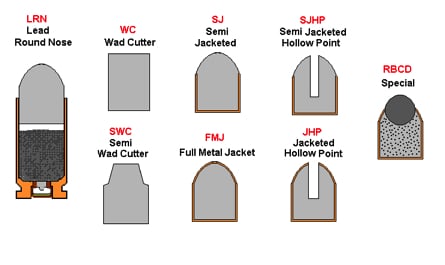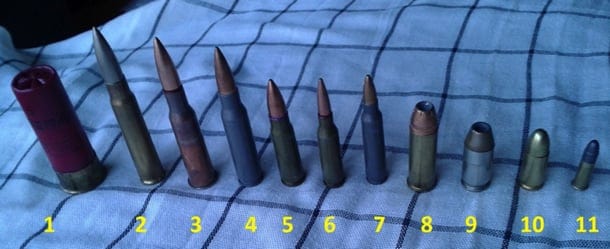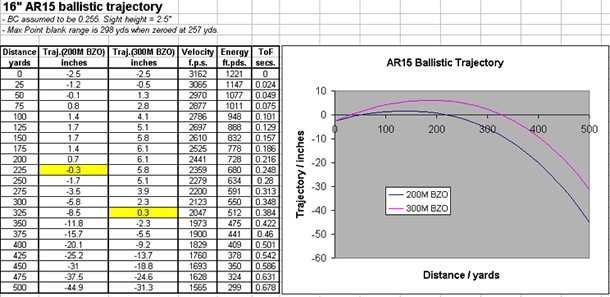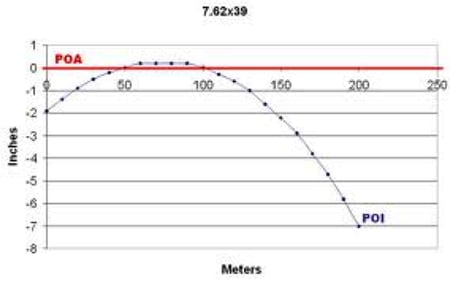Ammunition can be a very intimidating subject for those who do not know much about firearms. Selecting ammunition for hunting or personal defense is a very important decision with strong implications for the performance and safety of your firearm. With lots of opinions, misinformation, and geek-speak floating around on the topic, it can be overwhelming to the point of exasperation.
The good news is, it’s actually a really simple topic, once you understand some of the basic terms. So, with that in mind, let’s learn about various types of ammunition, some of the common lexicon, and how to judge what is “best” for you.
Ammunition is generally expressed in a measurement. Most of the world uses a metric rating, while the commercial market in the United States uses a U.S. standard measurement. This can create some confusion, but more on that later.
The measurements in metric are almost always a “diameter to length” ratio; for example, a bullet in the caliber:
- 5.56x45mm is 5.56mm wide and 45mm long
- 9x19mm cartridge is 9mm wide and 19mm long
- Shotshells are measured in “gauge”, with a lower number being a larger diameter. Typical 12 gauge shells are 70mm long, which works out to be 2½”, but offered in a 3” magnum as well
Before we go on to a quick look tying measurements to the actual cartridges, it’s important to note that a cartridge is made of four components:
- Case (generally brass, nickel, or steel)
- Primer – an ignition for the propellant; look for the round dimple on the base of the cartridge.
- Powder/propellant – also known as “gunpowder”
- Projectile – also known as the bullet (technically it's the only part of the cartridge that is a bullet)
Types of Bullets
Bullets come in various types that are denoted as suffixed acronyms; these bullet types can be visualized here:
There are several other types:
SP – Soft Point – the tip of the bullet is left uncoated (exposed lead)
AP – Armor Piercing – this ammunition has a alloy core, instead of lead
BT – Boat Tail – this means that the rear end of the cartridge is tapered to stabilize the projectile in flight
BTHP – Boat Tail Hollow Point is a combination of the Boat Tail and Hollow Point Features
This image demonstrates the cartridges and lists them below in order of descending length:
- 12 gauge Shotshell
- 8mm (7.9mm) Mauser
- 7.62x54mm Russian (Notice that this cartridge does not have a “rim” at the base)
- 7.62x51mm or .308 Winchester
- 7.62x39mm Soviet
- 5.45x39mm Soviet
- 5.56x45mm NATO or .223 Remington
- .44 Magnum (Notice that this cartridge does not have a “rim” at the base)
- .45 Automatic Colt Pistol (ACP)
- 9x19 Para. (Also known as: Luger, Parabellum, and commonly known as simply “9mm,” although there are other 9mm’s which have different lengths.)
- .22 Long Rifle
Again, a look at the calibers from the top, to compare their relative diameter:
Elements of Performance:
Now that we’ve had a quick look at the physical characteristics of these cartridges, let’s talk quickly about some elements of performance. This topic is the subject of many books, articles, and Internet posts and would take up a tremendous amount of space to fully explain in one article, but with an understanding of what these things mean, you can go forth and make decisions based on the knowledge you develop.
The word “Ballistics” itself is from the Greek Word ‘Ballein’, which means “to throw’. Just like a football or baseball, when a bullet is fired, it follows a trajectory and is assigned a velocity, and these two things account for the lion’s share of how a bullet performs. The bullet doesn’t fly in a straight line, but is ‘lifted’ and then begins to ‘drop’ as it loses velocity.
That can be illustrated by the following examples of ‘trajectory’:
POA = Point of Aim
POI = Point of Impact
Figures on the left are height in inches
Figures on bottom is distance in yards
As can be seen, these are not ‘straight lines’, and bullets follow an ‘arc’. This is often considered in how ‘easy’ or ‘difficult’ a particular caliber is to shoot – flatter shooting rounds (like the 5.56mm or 5.45mm) are very easy to hit with because they undergo very little change in elevation over the course of flight.
The bullet, upon impact, is assigned an “energy” rating, which is usually expressed in pounds per square inch, and this value is calculated using the bullet's velocity and mass. I personally prefer to use Joules, as it lets me keep my conversions to a minimum, but we can use the standard formulae to derive a figure:
Kinetic Energy is equal to mass (grams) times velocity squared (meters per second), which would look something like this:
It’s important at this point to discuss a very flaccid term: “stopping power”
This theoretical amount of energy is what people attempt to use to refer to the amount of energy transfer required to make a human being “halt”. The reason that this is such a dangerous misnomer is that in order for a person to be literally ‘stopped’ by the force of a bullet, the person firing that bullet would have to feel an equal or greater amount of recoil.
This means that when a person or animal is struck with a bullet, the impact is less than or equal to the recoil felt by the person firing the bullet, as per Newton’s laws of motion.
So, from this, we can assume henceforth that a person or animal reacts to the psychological pressures of the physical injury and the ‘surprise’, rather than the actual force of the impact.
In short, there is no numerical threshold that can be relied upon to produce ‘stopping power’.
Thoughts on Ammunition:
Ammunition (and caliber) is a hotly contested issue. The 5.56mm has been lauded as inefficient and underpowered, while the Afghans nicknamed the Soviet 5.45 x 39mm “The Poison Bullet” due to the smallest injuries resulting in death.
There’s less than 0.11mm difference between them, so why the disparity? Truthfully, it doesn’t exist.
Design has a lot to do with it – the Russians designed the 5.45 with a hollow cavity in the rear of the bullet, which causes its lighter rear end to ‘turn’ immediately upon impact, sending it on a wildly erratic path once it enters tissue, a process called “keyholing”. The 5.56mm used by American forces, by comparison, is a simple, jacketed ball round, not meant to maim or cause excessive wounding. Bullet design has a lot to do with what the bullet is good at, as well as what it is not.
Ball ammunition, for example, is notorious (in both handguns and rifles) for passing through the intended target (or drywall, OSB, vehicles, and so forth) and striking ‘unintended’ targets. For this reason, Hollow Point ammunition is used by most professionals and citizens. This is because upon striking a target, hollow points rapidly expand in diameter, which creates drag and slows the projectile, making it both larger and more likely to strike vital targets, while decreasing the likelihood that it will pass through the target.
Another important note to make is that Hollow Points, though they sound terrible and nefarious, are actually far safer to use for defense than is ball (which sounds pretty unimpressive) because of this reason. Hollow Points are *not* “Armor Piercing” rounds, and this means they are not regulated in any capacity (yet) though some are restricted to Military and L.E. purchases.
Armor Piercing rounds, while we’re on the subject, have a misnomer.
The body armor worn by police officers (Commonly referred to as IIIA, soft armor, or Kevlar) is penetrable by nearly every single production rifle round that’s above .22 caliber. For this reason, all rifle rounds could be considered “armor piercing”, unless we are discussing military-grade armor (Commonly known as IVA, SAPI or Ceramic Plate armor), which is made specifically to stop military ammunition. Therefore, the only “armor piercing” ammunition that’s made is made for rifles, and it only applies to military grade SAPI plates.
This is an important academic point as the political rhetoric continues to boil over – as a ban on “armor piercing” ammunition could easily be taken to mean “all rifle calibers other than .22”.
So, when you select ammunition for hunting or personal defense, it’s important to learn:
- The ballistics of the cartridge you’ve selected (how ‘high’ or ‘low’ will the bullet be at a given distance?)
- How prone will it be to passing through walls, tissue, or vehicles? (Very important for safety and liability reasons – it’s incumbent on you to know where every round you fire goes!)
- Is the type of ammunition you’ve selected appropriate to the task at hand. For example, there’s no reason to buy hollowpoints to practice your marksmanship! They’re more expensive, and will perform better, but ball will serve just fine for this role.
Also, if you’re very new to owning firearms, doublecheck to be sure that you’ve got the right cartridge… By now, you’ll have noticed that there are very common cartridge diameters. The “7.62” for example, could refer to 7.62x25 Tokarov, 7.62x39 Soviet, 7.62x51 Winchester, 7.62x54 Russian, or 7.62x59 (commonly known as .30-’06)! As well, “9mm” could mean 9mm Kurz (.380ACP), 9x18 Makarov, 9x19 Para., or 9x21 Largo.
While this might seem daunting, your firearm will have the correct designation stamped on it, and unless you’ve got a fairly uncommon firearm, it should be very easy to get the help you need… and as always, I’m more than happy to answer any questions that I can, so feel free to ask.
Cheers!
~ Aaron
This is a companion discussion topic for the original entry at https://peakprosperity.com/understanding-ammunition/




